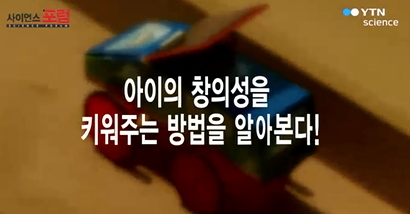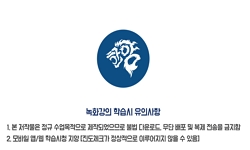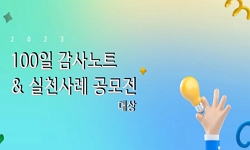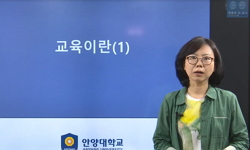본 연구는 서예 교육의 인성 함양이 개성의 발현을 요구하는 미술교육의 창의성과 양립 가능한지에 대한 궁금증에서 출발한다. 서예사에서 사람의 됨됨이는 유가 수양론의 실천적 방면으로...
http://chineseinput.net/에서 pinyin(병음)방식으로 중국어를 변환할 수 있습니다.
변환된 중국어를 복사하여 사용하시면 됩니다.
- 中文 을 입력하시려면 zhongwen을 입력하시고 space를누르시면됩니다.
- 北京 을 입력하시려면 beijing을 입력하시고 space를 누르시면 됩니다.

퇴계 태극(太極)에 기초한 서예의 창의·인성교육 시론 = A Discourse on Creativity and Character Education in Calligraphy Based on the Toegye's Taiji(太極)
한글로보기https://www.riss.kr/link?id=A109141627
-
저자
최다은 (성균관대학교)
- 발행기관
- 학술지명
- 권호사항
-
발행연도
2024
-
작성언어
Korean
-
주제어
서예 ; 태극 ; 인성교육 ; 창의예술 ; 창의인성교육. ; Calligraphy ; Taiji(太極) ; Personality education ; Character art ; Creative personality education.
-
등재정보
KCI등재
-
자료형태
학술저널
- 발행기관 URL
-
수록면
7-32(26쪽)
- 제공처
-
0
상세조회 -
0
다운로드
부가정보
국문 초록 (Abstract)
본 연구는 서예 교육의 인성 함양이 개성의 발현을 요구하는 미술교육의 창의성과 양립 가능한지에 대한 궁금증에서 출발한다. 서예사에서 사람의 됨됨이는 유가 수양론의 실천적 방면으로 강조된 매우 중요한 요건이었다. 서예는 근대화를 겪으면서 예술성에 중점을 두게 되었고, 서예의 인성교육은 주로 성격의 기질 변화, 주의력 집중 등으로 이해되었다. 그러나 자신의 타고난 천성(天性)을 강제로 억압하는 교육에 흥미를 느끼는 일이란 거의 불가능에 가깝다. 수양론 측면에서의 서예가 오늘날의 인성교육과 창의예술에 적합한지 살펴볼 필요가 있다.
서예의 인성교육이 가능하다는 명제를 성립하기 위해서는 ‘타고난 인간의 본성은 선하다[性善]’는 것에서부터 출발해야 한다. 인성교육에 있어서 인간의 본성이 선하다는 것은 가장 중요하다. 인간의 본성이 선하지 않다고 한다면, 나를 포함한 인간의 마음을 치유하는 예술의 선한 역할은 모두 본성에 어긋나는 일이 될 뿐이다.
서예 교육의 대표적인 학습 방식은 서첩을 임서(臨書)하는 모방에 있다. 모방의 의의는 창의적인 창조로 연결되는 데 있는 것이지 모양만 닮으려는 모방은 창의성에 아무런 도움이 되지 못한다. 서예 학습에서 창의성을 발견하기 위한 논제를 유가 문인예술의 학문적 토대가 되는 성리학, 특히 하늘의 진리와 인간과의 관계에 기초하여 인간의 심성론을 전개한 퇴계의 ‘태극(太極)’을 통해 시론적(試論的)으로 접근하고자 한다.
온전한 존재법칙의 태극과 선한 본성으로 서예의 인성교육 가치를 재고하고, 나의 성정을 알고 따르는 예술이 곧 창조적 작업이라는 것을 밝힌다면 서예 학습의 창의·인성교육을 제시할 수 있을 것이라 여겨진다.
다국어 초록 (Multilingual Abstract)
This study stems from the inquiry into whether character development in calligraphy education can coexist with the creativity demanded by art education, which emphasizes individual expression. The cultivation of a person's character has been a crucial...
This study stems from the inquiry into whether character development in calligraphy education can coexist with the creativity demanded by art education, which emphasizes individual expression. The cultivation of a person's character has been a crucial element in the history of calligraphy, often presented as a practical aspect of Confucian self-cultivation theory. With modernization, calligraphy was integrated into the art curriculum, and its role in character education has been primarily understood in terms of temperament changes and improved concentration. However, it is nearly impossible to engage in education that demands the suppression of one's innate disposition. Thus, it is essential to explore whether calligraphy, viewed through the lens of self-cultivation theory, is suitable for contemporary character education and creative arts.
To argue that character education through calligraphy is feasible, one must start from the premise that 'human nature is inherently good (性善)'. If human nature is not considered good, the beneficial role of art, including its capacity to heal the human heart, would be fundamentally contradictory.
A common learning method in calligraphy education is copy-training, which involves imitating calligraphy albums. The significance of imitation lies in the connection to creative creation. Imitation itself, which tries to resemble only the shape, does nothing to creativity. This study seeks to approach the topic through Neo-Confucianism, specifically Toegye’s Taiji (太極), which develops the theory of human nature in connection with the truth of Heaven.
By reassessing the value of character education in calligraphy through the principles of Taiji and the inherent goodness of human nature, and by demonstrating that art which comprehends and follows one's nature is inherently creative, it is believed that the integration of creativity and character education in calligraphy learning can be effectively presented.




 KCI
KCI KISS
KISS






